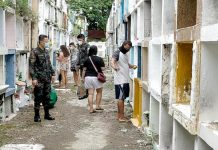[av_one_full first min_height=” vertical_alignment=” space=” custom_margin=” margin=’0px’ padding=’0px’ border=” border_color=” radius=’0px’ background_color=” src=” background_position=’top left’ background_repeat=’no-repeat’ animation=”]
[av_heading heading=’Yes, why no container cargoes at our port?’ tag=’h3′ style=’blockquote modern-quote’ size=’30’ subheading_active=’subheading_below’ subheading_size=’18’ padding=’10’ color=” custom_font=” av-medium-font-size-title=” av-small-font-size-title=” av-mini-font-size-title=” av-medium-font-size=” av-small-font-size=” av-mini-font-size=” admin_preview_bg=”]
BY JOHNNY NOVERA
[/av_heading]
[av_textblock size=” font_color=” color=” av-medium-font-size=” av-small-font-size=” av-mini-font-size=” admin_preview_bg=”]
Tuesday, March 20, 2018
[/av_textblock]
[av_textblock size=’18’ font_color=” color=” av-medium-font-size=” av-small-font-size=” av-mini-font-size=” admin_preview_bg=”]
WHEN newly-installed Customs District Collector John Simon of the Port of Iloilo made a courtesy call on Iloilo City’s Mayor Jose Espinosa III at city hall last week, he shared his observation that Iloilo traders have not been availing of international container cargo for imports from other countries. He cited as example imported rice brought in sacks on local ships and not directly unloaded here by cargo container from a foreign vessel.
Our new Customs Collector informed Mayor Espinosa that he will implement a change in the system and make sure that local traders benefit from direct shipments of their cargo to our port.
We are surprised of this information because way back on Aug. 25, 2015 we wrote about this cargo service under the title, “Mariners are coming to town.” This was about the Liberalized Cabotage Law passed by Congress that allowed foreign-registered vessels to dock directly at domestic ports and load and unload cargo for import or export purposes.
The term “cabotage” was explained as “trade or navigation in coastal waters.”
Before this law, cargo can only be transported within our country from one local port to another by Philippine-registered vessels.
The Liberalized Cabotage Law was expected to bring down the cost of transportation and prices of goods to the provinces outside Manila. At that time we already asked if our port was ready for the expanded function and is our city prepared to implement it?
We imagined that there can be an influx of foreigners in town when crew members from foreign ships come to port to load or unload cargo.
We also mentioned that our local Sangguniang Panlungsod might find a need to issue or amend our local ordinance because of foreign vessels and their crew that will be visiting our port.
What is the prospect of expanded business to benefit the city because of this new law?
With our new District Customs Collector John Simon at the helm, we are happy that the new Liberalized Cabotage Law may now be fully implemented.
BORACAY, OH BORACAY!
Boracay has been hogging the headlines since Feb. 9 when President Rodrigo R. Duterte threatened to close it from tourists if its sewerage and garbage problems cannot be addressed in six month’s time.
Well, we welcome the response to the emergency with the setting up of “Oplan Save Boracay” led by Tourism secretary Wanda Tulfo-Teo and composed of four other department secretaries concerned with regulation and the environment. They met and took unified action to resolve Boracay’s environmental problems, allowing themselves 180 days for the job.
But what is this latest news allegedly coming from the Department of Environment and Natural Resources (DENR) that it is placing Boracay under a “state of calamity” on March 26, 2018, and then close it from the public for rehabilitation effective April 26, 2018? And now we see hotel and resort employees holding a night protest against the idea.
What happened to the ongoing joint efforts to solve Boracay’s environmental issues in 180 days set by “Oplan Save Boracay” of which DENR was one of the movants?
Why is DENR now acting on the issue alone even before the target date?
While stakeholders in Boracay might have no objection to closures of individual violators of environmental laws, we believe total closure of the resort island should never be resorted to because of its drastic effect on tourists and the island workers. The damage to business in the resort island will be hard to recover, considering that tourism is a very competitive business.
Figures of tourist arrivals as of Feb. 14,2018 released by the Department of Tourism showed Aklan on top in Western Visayas:
* Aklan – 2,162,663: Overseas Filipino, 2%; Domestic, 52%; and Foreign, 46%
* Antique – 162,925: Overseas Filipino, 0%; Domestic, 97%; and Foreign, 3%
* Capiz – 156,238: Overseas Filipino, 1%; Domestic, 98%; and Foreign, 1%
* Guimaras – 128,256: Overseas Filipino, 0%; Domestic, 97%; Foreign, 3%
* Iloilo – 301,011: Overseas Filipino, 0%; Domestic, 98%; Foreign, 2%
* Iloilo City – 857,068: Overseas Filipino, 0%; Domestic, 97%; Foreign, 3%
* Negros Occ. – 836,872: Overseas Filipino, 0%; Domestic, 96%; Foreign, 4%
* Bacolod City – 831,687: Overseas Filipinos, 91%; Foreign, 9%.
You will note that the biggest number of tourists above at 2,162,663 is for Aklan province because of Boracay, with 46 percent of them coming from foreign countries.
***
Historical Quote for the Week
“The first department store in the country, Hoskyn & Company, was established in 1877 in Iloilo City.” (For comments or reactions, please e-mail to jnoveracompany@yahoo.com)/PN
[/av_textblock]
[/av_one_full]







